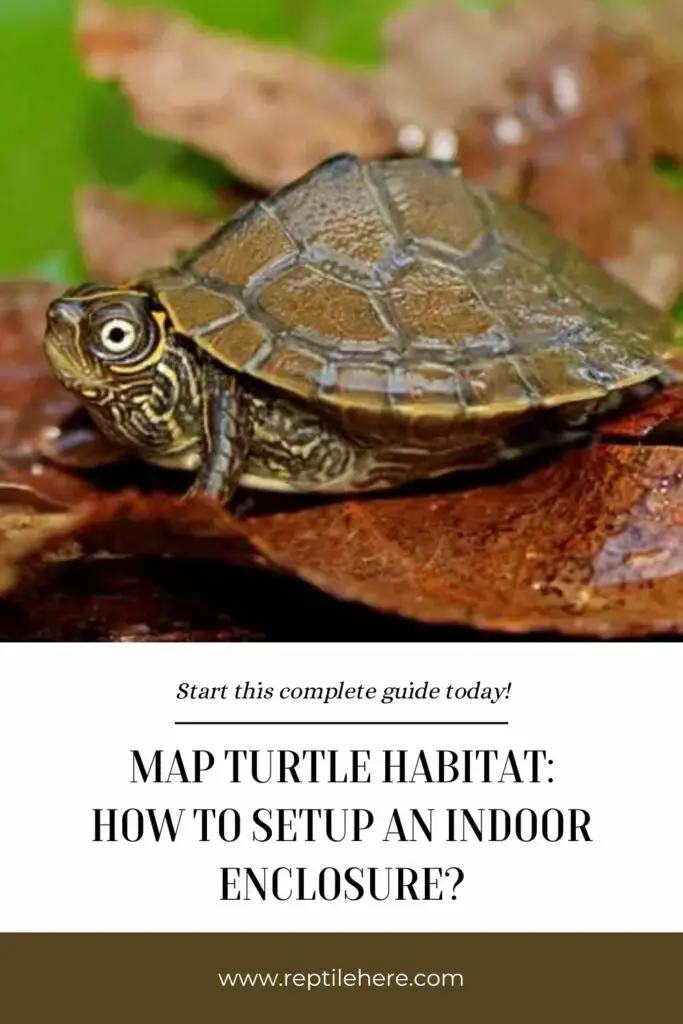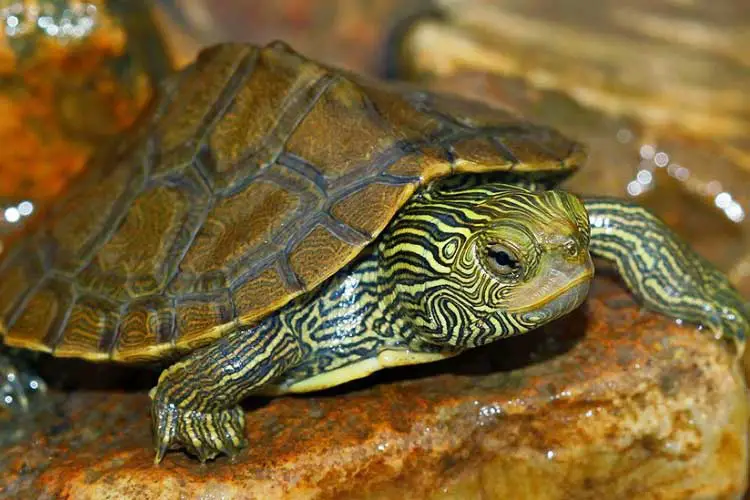Map Turtle Habitat: How to Setup an Indoor Enclosure?
When setting up an indoor enclosure for your map turtle, there are certain things to consider to ensure you create a comfortable and healthy habitat for your pet. This guide will teach you how to come up with the best map turtle tank setup.
The ideal map turtle tank setup comprises an appropriately sized tank with a filtration system, basking platform, heat source, and UV lighting. Adding accessories and decorations isn’t important for turtle survival but helps improve the overall turtle habitat aesthetics.
Discover full details in the following guide on how to come up with a comfortable living space for your map turtle. We’ll discuss the key things you need for this project, steps to follow, and other key info to keep in mind.
What do you need to put in your turtle tank map?
Contents
- Turtle tank/enclosure
- Water filter
- Water heater
- Basking platform
- UV lighting
- Decoration (optional)
How to set up a map turtle tank step by step:
The map turtle indoor enclosure setup process isn’t much different from that of other aquatic turtle species.
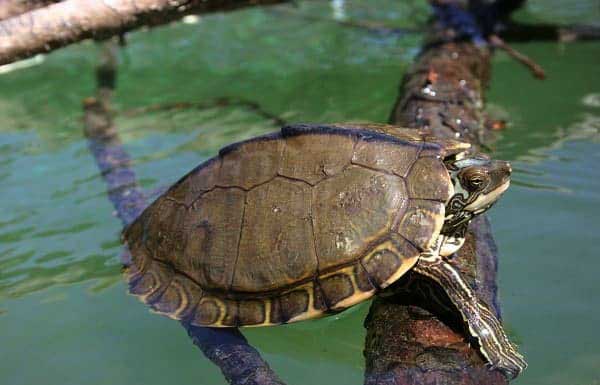
Below are the key steps to follow when setting up a map turtle tank:
Step 1. Choose the right size of tank
The size of the turtle tank you get for your map turtle pet will mostly depend on whether you get a male or female turtle.
Female map turtles are generally bigger than males and will require larger tank sizes.
An ideal tank size for a male map turtle is between 75 gallons around 90 gallons. Females require larger tanks from 125 gallons and above.
You should also consider the length of the enclosure you get for your pet. Males will feel comfortable in 4-ft-long enclosures to enjoy plenty of swimming room. Females will do well in a 6ft. long tank.
Step 2. Create a basking platform
Your map turtle will need to take a break from the water, so you need to ensure you provide them with a basking area where it can rest when not swimming, dry its body, and soak up UVB light.
If you’re the handy type, you can come up with your own basking platform. Just make sure it’s nice and flat and can accommodate the size and weight of your pet while leaving enough room to turn around.
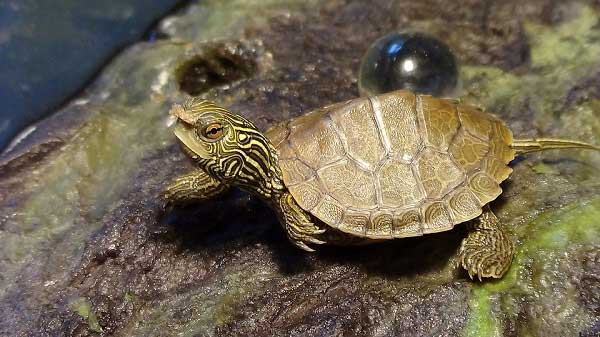
If you create a floating basking dock, ensure it’s stable on one side of your enclosure.
You can also use large gravel or rocks to come up with a perch for your pet turtle.
Alternatively, you can get a readymade basking dock with rampage from the stores. A decent dock with rampage will cost you around $30-$50 bucks.
Step 3. Add a water filter
Aquatic turtles are messy creatures and produce tons of waste that can easily turn their water dirty and multiply the levels of ammonia and nitrates in the water—making the environment unhealthy for them.
That said, a good water filter for your turtle enclosure will depend on how much water your tank holds. As usual, we recommend getting a canister filter as it’s more powerful and efficient for a turtle tank.
Step 4. Install a heat source
Map turtles are cold-blooded and require an external heat source to regulate their body temperature. As such, you need to equip their tank with a heat lamp.
This should be positioned at the basking area such that it can’t burn your turtle.
In addition to the basking area, you should also get a submersible water heater to help maintain optimal temperatures inside the turtle enclosure.
Temperatures for the basking platform should be between 85 and 90 degrees F while water temperatures should be maintained at slightly below 75 degrees F.
Step 5. Lighting for map turtle indoor enclosure
Since this guide is about housing your map turtles indoors, it means they won’t get exposed to natural sunlight.
In this case, you’ll need to provide your pet turtle with a source of UV light that produces UVA and UVB lighting for up to 12 hours each day, all year round.
The UV lamp provides your reptile with the much-needed UBA rays for vitamin D3 synthesis.
Lack of vitamin D3 makes your pet turtle unable to properly absorb calcium, leading to fungal infections, metabolic bone disease, and other shell and bone issues.
Make sure you point your UV lamp on the basking platform of your tank.
Besides the UV light, you may also consider adding a set of other lights (set to a timer) to help mimic the natural passing of day and night.
The following video will take you through a visual guide for the Mississippi turtle tank setup
Other things to consider for your map turtle tank setup
When coming up with a basic enclosure for your map turtle, you don’t have to worry about too much decorating.
If you want, however, you can get a handful of extra items into your tank to make it look more eye-pleasing.
One of the extras to consider is aquatic plants (they can be fake or live plants). These will improve your tank looks and at the same time provide plenty of hiding spots.
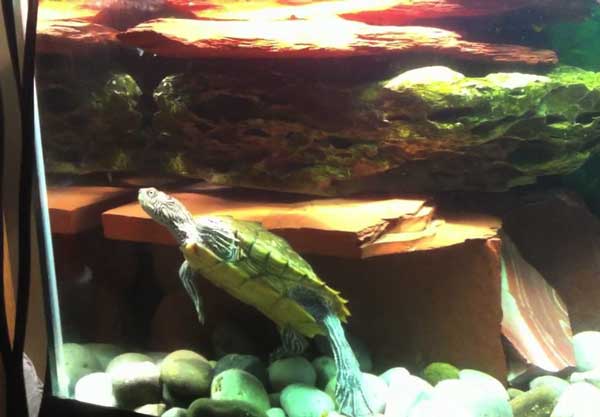
You can also get floating accessories from pet stores such as rafts, logs, etc. to make your turtle tank interesting for your pet turtle.
How to set up a baby map turtle tank?
Baby map turtle tank setup is the same as that of the adult described above. You should start by getting an appropriate tank size for your baby turtle.
However, note that you’ll need to upgrade to a larger tank once your baby turtle grows.
After getting the right tank size for your baby map turtle, you’ll need to equip it with a basking platform, UV light source, heat lamp, water heater, and even thermometers for monitoring the basking area and water temperatures.
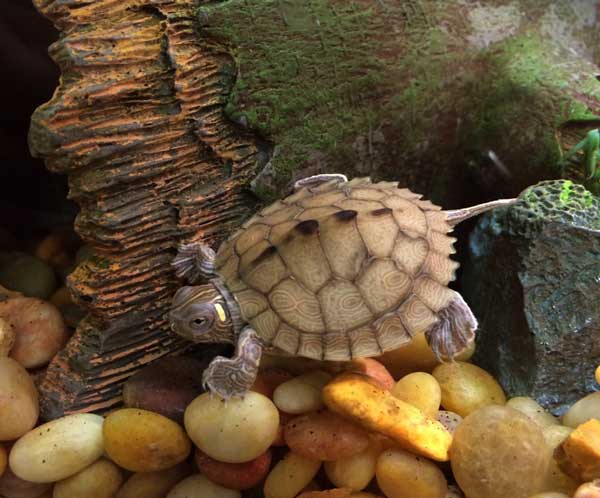
Don’t get misleading info that baby turtles don’t require the same setup as their adult counterparts. Just ensure you provide everything in their tank the same way you’d for an adult turtle!
How deep should a map turtle’s water be?
When setting up an indoor enclosure for map turtles, the water should be deep enough for the turtle to swim freely and even flip its body.
The Mississippi map turtles, for instance, love swimming a lot, so you should make their waters deeper. Consider a depth of 10 inches all the way up to 30 inches!
For baby turtles, however, you should be careful about the depth as they’re not yet good swimmers.
For a hatchling aged 2-4 weeks, the water level should be around 2 to 2.5 inches. For a baby turtle over 4 inches, you can use a water depth of 3 inches and increase it as the turtle grows.
Are map turtles land turtles?
No! Various map turtle species are strictly aquatic turtles and spend most of their life in the waters. They eat, defecate, urinate, and sleep in water—just like other aquatic turtle species.
Mind you, their natural habitat for map turtles include large streams, rivers, and lakes in the wild. The only time a wild map turtle leaves the water is when it wants to nest or when looking for new aquatic habitats.
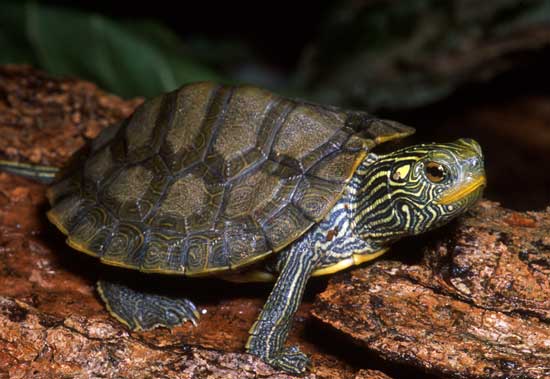
That said, it’s essential to provide a basking area as part of the map turtle tank setup. This will enable them to take a break from the water to rest, dry off, and soak up the beneficial UV rays.
FAQs:
In captivity, a map turtle requires a habitat with large sized tank, water filter for keeping the water clean and healthy, a water depth of at least 12 inches, and a basking area with heat and UV lamps. The temperature for basking area and swimming areas should be maintained at 85 to 90 degrees F and slightly below 75 degrees F, respectively.
The ideal size of a tank for a baby map turtle is around 20 gallons. However, keep in mind that these turtles can grow into large sizes of up to 11 inches, so you’ll need to upgrade their tank as they mature.
The Mississippi map turtle will require a tank with a depth of at least 12 inches to enable it to swim and flip comfortably. However, the exact depth of water for your map turtle will depend on the size of your enclosure as well as the number of pets you own.
Final Verdict
Comfortable housing is the first step to keeping your map turtle happy and healthy. We’ve just discussed the step-by-step guide above on how to achieve a perfect indoor enclosure for your pet turtle. We hope that you’re now in a better position to build a basic habitat that’s comfortable and healthy for your new friend.
The most essential parts of this tank setup include an ideal-sized tank, basking spot, strong water filter, heat source, and UV lighting. Ensure you maintain the water and basking area temperatures at the recommended levels. You can also provide substrate and various décor to make your turtle habitat eye-pleasing and natural.
